Bible History – C. 1407-06 BC
GOD’S WAR MANUAL
Sun Tsu’s The Art of War is a wonderful work on the basic principles of successful strategy in war. It is a strong work which many professions even outside the military, such as business executives, learn from. Nevertheless it is still based on the “Babylonian system”, which is man’s way of doing things. Deuteronomy 20-21 is God’s own War manual which is infinitely simpler and better. The instructions focus on moral issues for the success in the battlefield depended not on tactics but on faith in God.
- Do not fear superior numbers of the enemy.
- Do not fear superior weapons such as horses, chariots and soldiers.
- God is your protector just as He has been since Egypt if you stick with Him.
- Let the priest encourage the troops before battle to remind them not to waver.
- Officers to instruct men to dedicate their homes before battle and enjoy the fruits of their land before going to war.
- Men were also allowed to have their honeymoon before going to war.
- Soldiers suffering from cowardice are ordered home so not to infect their comrades with fear.
- Officers appoint lower rank commanders in charge of individual troop units.
- Target enemy cities within the axis of advance are given a chance to surrender, in which case the occupants are conscripted into forced labour.
- If a city resists it is attacked and the men killed.
 Women, children and animals are spared.
Women, children and animals are spared.- All within the city walls can be taken as plunder.
- Distant cities, from nations outside the plan of conquest are destined for total destruction and all inhabitants killed: Hittites, Amorites, Canaanites, Perizzites, Hivites, and Jebusites.
- In long sieges, not to cut down the trees for there are future sustenance. 1
- Non food producing trees could be used.
LESSONS on WARFARE
The new Army of Israel could root their fundamentals on this and then Joshua and his officers would continue the training.These regulations show God’s great love for His people and care for their intimate well being. In this, the Army of Israel has important distinctions:
- Value is given for the soldier’s building of the home. If the soldier is recently married or has a new home or vineyard he is to be excused from war until these things are tended to.
This demonstrates:
(a) the intertwining of civilian life with the soldier life;
(b) the importance of a healthy home front. 2
- God’s concern that his children experience some of the earthly pleasures in case they died in battle is reflected in these regulations.
- God is also full of grace and leniency. We see how cowards are not court martialed and executed but allowed to go home.
- The regulation concerning trees, which is an instruction of using resources on the march, is an important early indication of the mobile warfare that awaited the people.
- Respect is shown for women from fallen enemies.
OPPOSING FORCES – the CANAANITES
Through Moses God explained that it was not because of any righteousness or integrity that the people would take the land but rather on the account of these nations’ wickedness. Everything in the area of the Promised Land was to be spared if possible.
God reminded the people never to mix with Moabites and Ammonites but to respect Edomites as part of their family and Egyptians as they took them in refuge in the past.
Outside nations coming against Israel had to be eliminated because of their wickedness.
The danger of their demonic pagan worship is so great that while, in general, God instructs the army to save civilians and plunder of defeated foes for themselves, in the case of the named nations He commanded them to destroy every living thing.
God had to drive them out so that the originalblessing He had given mankind (Adam) through Abraham, Isaac and Jacob could continue until the Messiah was born.
These nations (including the giants discussed at the Battle of Edrei) were all known as Canaanites; descendants from other figures in the Bible.
The Canaanites were a formidable foe ahead of the Israelites but did not pose an equal challenge to the larger empires surrounding the Levant. This was greatly due to their technological delay which, in itself, was rooted in the disruptions caused by troop movements launched by these powers to put down reoccurring rebellions.
Although the Canaanites were one nation culturally, politically they were organized into city states with independent governments.
Amorites: Akkadian word meaning westerner. While Canaanites referred to those in the plane areas to the west, Amorites were of the same extraction but habituating in the eastern mountainous regionEdom (Edomites): Esau. For years thoughts to be nomads, they now are recognized as a advanced civilization which produced copper. A force to be reckoned with.Moab (Moabites): son of incest
of Lot and his daughter.
Ammon (Ammonites): second son of Lot’s incest.
Hatti (Hittites): from Anatolia (modern southern Turkey).
Amalek (Amalekites): descendants of Esau.
Jebus (Jebusites): residents of Jerusalem before Joshua’s conquest.
Perizi (Perizzites): people living generaly in Canaan since the time of Abraham
Hivites: people living in northern Canaan, from Lebanon to northern Jerusalem hil area. Decendants of Noah’s cursed son Ham and settling in Shechem. May be identified with Horites, Achaeans and Hurrians.
Phoenicia (Phoenicians): coastal people from the East Mediterranean, which later spread as far as Carthage. They are markedly distinct from other civilizations of Canaan.
Philistia (Philistines): sea people from Crete and Greece. They landed on the coast around 2nd Millennium BC and made their way south failing to conquer Egypt. They ended up settling in Gaza, Ashdod, Ashkelon, Gath and Ekron. Today they are the Palestinians. Every time the Bible mentioned Philistines it says:
Moses warned that if these are not all destroyed they will become a thorn in Israel’sflesh. During this era it was already common practice for empires such as the Hittites to use their frontier people to compose their armies. It would use these foreigners rather than their own central folk. This is another reason why the Canaanites always posed a big threat to the Hebrews: they could be used by Egyptians, Hittites and later the Assyrians to wage war against them.
STRATEGY vs. FAITH
Military History – GOD’S WAR PLAN in ACTION
Historians disagree with when the Israelites arrived in Canaan. Some say 15th Century BC, others say 13th. One thing they seem to agree
on is that the taking over of the land was not a giant military invasion as it is often pictured. Indeed God told Joshua to destroy every living thing but this was a more gradual process as we will see.
Also, contrary to God’s instructions, the people had instances of assimilation and alliance with some Canaanite tribes (such as the Gibeonites) for military reasons. The danger of this was, of course, not following God’s instructions fully. The results of this are never good. With such proximity or collaboration came contamination of ungodly customs and pagan worship. This was a seed of death that the Hebrews planted and would yield a curse of opposition, wars and invasions that remains with Israel to this day and will only be resolved with the coming of the Messiah.
 PRAISE & WORSHIP
PRAISE & WORSHIP
Blessed be the Lord who enables us to keep our focus on that which we were sent to do. 3
Military Strategy – The THREE CAMPAIGNS in CANAAN
Militarily, Joshua clearly designed the invasion of Canaan to follow these three phases:
- Establishing a bridgehead on the west of the Jordan River.
- Creating a secure base of operations in the mountains of the central ridge.
- Spreading the occupation out from the center to a wider area.
There are three campaigns described in the books of Joshua and Judges: South, Center and North.
 POINT A CROSS
POINT A CROSS
The geography itself points to the gospel. Life is represented by the Sea of Galilee, where the water gathers and flows down the Jordan River descending into the Dead Sea where nothing lives. The Sea of Galilee lives because it gives its water to the Jordan. The Dead Sea dos not live because it only takes and gives nothing. It is no coincidence that this emblem of Hell is the lowest point on Earth; 422m below sea level.
The God of War – BIBLE MILITARY HISTORY in JOSHUA
While there are wonderfully detailed early battle descriptions in the Book of Joshua (such as Ai, Gibeon and Waters of Merom), as a whole, the campaigns are actually sparsely populated with battle accounts when one considers the number of cities that were taken over the years. Most battles are extremely summarized or even just mentioned in passing. This was perhaps to put the emphasis on God delivering the land to His people, as promised, rather than directing the reader to focus primarily on the military feats of the people.
The History of GOD’S STRATEGY FOR SUCCESS
Numbers 33 describes the last set of instructions that God asked Moses to pass on to the people for their conquest of Canaan once they crossed over and took the land:
- Drive out the population occupying it.
- Destroy the idols and false religion.
- Decide the land according to tribal size.
Note that these seem to be minor points militarily. Strategy is built upon instructions of movements, attacks, logistics and so on. Here God is mainly concerned with what to do once the land was in His people’s hands. God shows that it is not enough to take the land. You must ensure it’s possession and those are the more easily forgotten requisites.
Indeed, one of the main rules of war is that victory comes not by occupying ground but by destroying your enemy. God is clear in emphasizing that if the enemy is not completely driven out it will become a stumbling block for the Jews and God will treat His people the way he initially planned to treat their enemies. This strategy is coherent with the geopolitical realities of the time. As the Kingdom of Mitanni focused on a new problem, the Hittites, Egypt was too weak and focused restoring it’s own kingdom. 4
This was a point Canaan was uncharacteristically peaceful, at least as far as the big powers were concerned. The land was thus ripe for Israelite occupation for a short interval. It was almost a case of now or never.
NO STONE UNTURNED
Apart from destroying the enemy, physically, the destruction of his pagan symbols is expressly given in many instances.
Objects forbidden by God:
(a) Altars and high places, used invariably for blood sacrifices, were only acceptable when devoted specifically to God and raised on certain permitted locations.
(b) Pillars, such as Asherah Poles were almost always forbidden because they represented other deities being carved with their images. They were allowed, rarely, when erected as a historical marker, such as at the one King Solomon put up to mark the crossing the Red Sea.
(c) Images were smaller objects also representing other gods. Asherim we’re popular wooden images representing Asherah (Deuteronomy 7:5; 12:3).
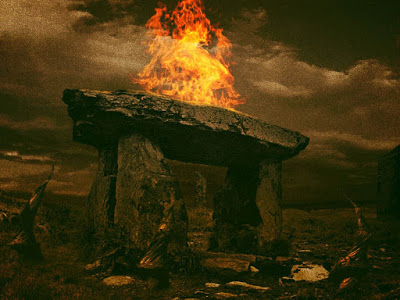
Where did these deities actually exist? There are generally two belief systems. In Egypt the gods were believed to live always in the heavens but were also present in statues. Because of the gods’ sacred nature these statues were kept in dark places and only seen by priests except during festivals. On the other side of that early world, Mesopotamia, the image was a mere representation while fashioned in wood, stone, or metal. However, once it was put in a temple then the deity entered and lived in that image. The idol was, to the believer, a real god. This is why destroying these objects throughout the Hebrew war path had a more powerful consequence to the enemy. It is pertinent to ask if the pagan gods are not real then the images and high places were of no consequence. That is not so. The veneration and use of such objects is a point of contact of belief in the occult. In the same way as the altars for God were a point of contact for faith in Him. It is not the objects in themselves but what takes place when worshiper and object come together: doors for evil spirits open.As far as the diverse images representing different gods then, sure, in one hand there were no such gods but, in another, sometimes these were representative not of gods but of very real demons who, are controlled by the god of this world (2 Corinthians 4:4), Satan.
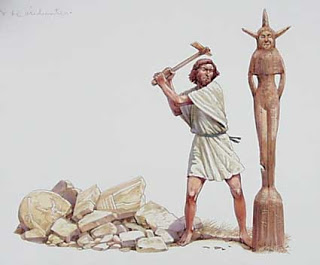
The Hebrews were the only ones in history that:
(a) worshiped a single all-powerful god
(b) conducted an imageless worship discouraged by God himself.
DIVISION of the LAND
Numbers 34 clearly shows
(a) God’s established frontiers for the Promised Land and
(b) the division of the land among the tribes.
The Palestinian conflict of today has much to do with negating this chapter of the Bible. Each archaeological discovery since then has confirmed the Jewish people’s claim to the land.
 POINT A CROSS
POINT A CROSS
Entering into the land of Canaan signifies, for today, believers entering into eternal rest of God’s kingdom. Moses, representing the Law was not able to take the people into the promised land but Joshua, representing Jesus, was able.
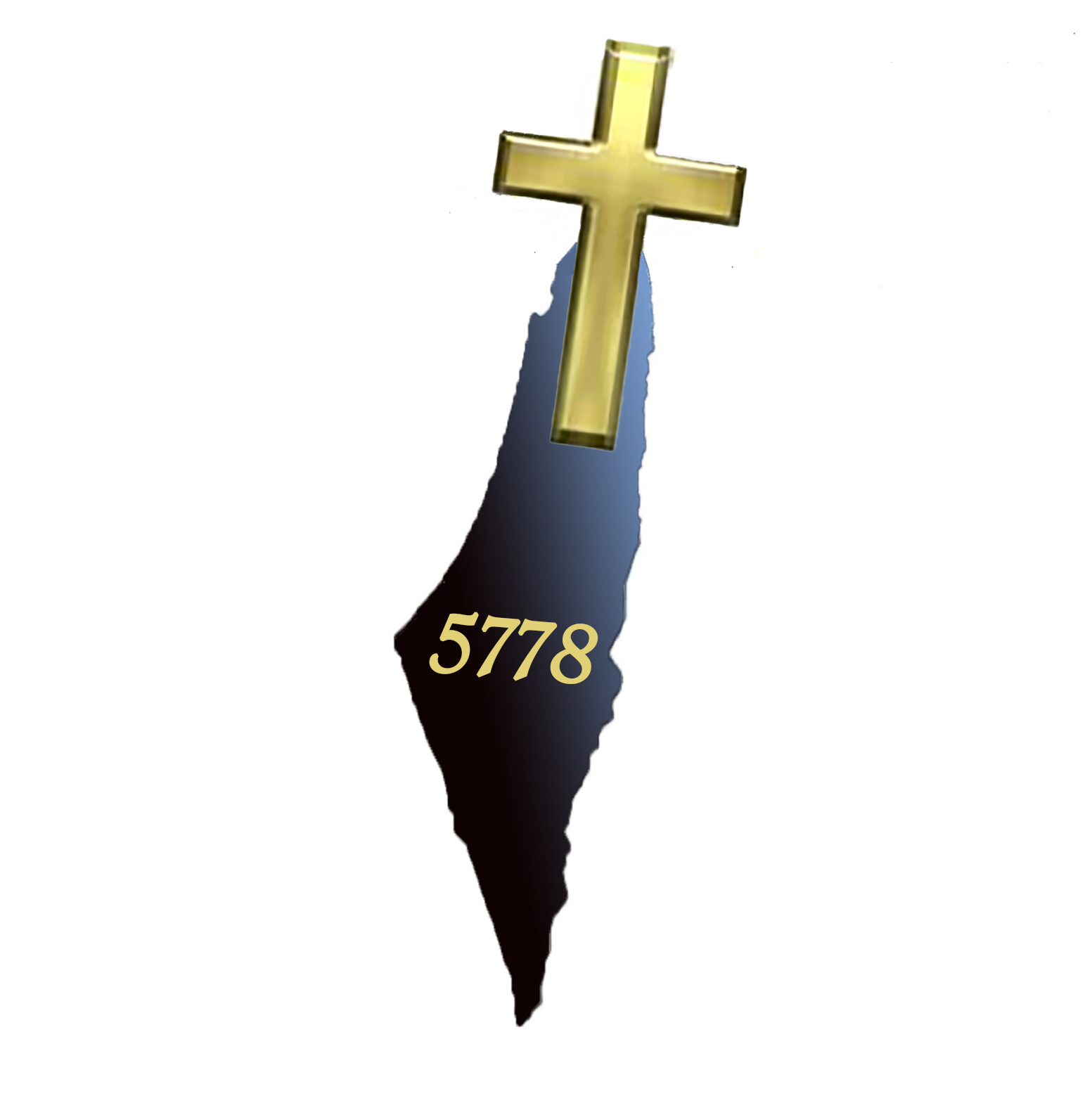

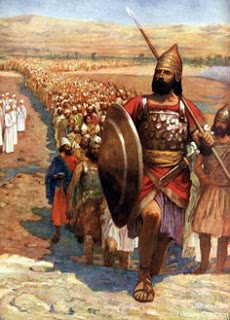
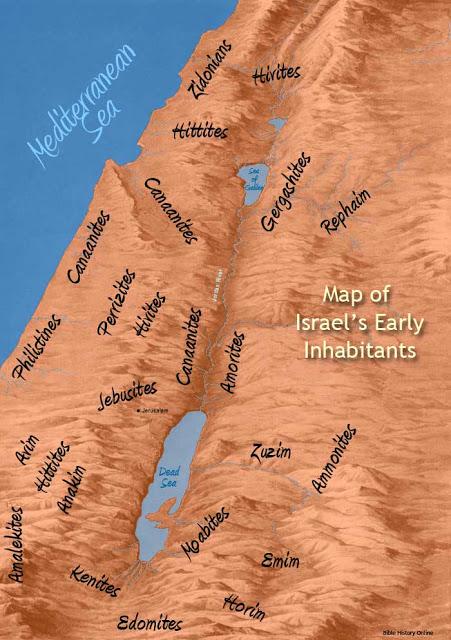
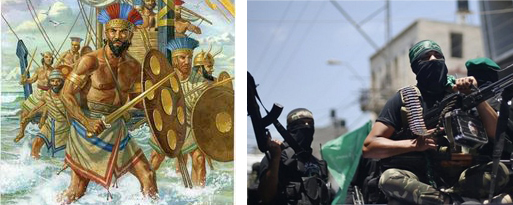

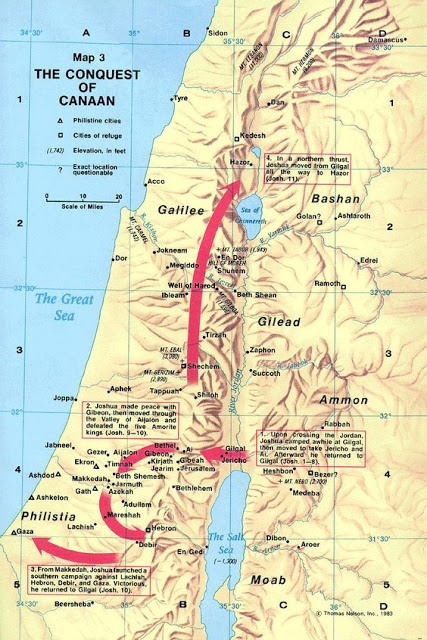
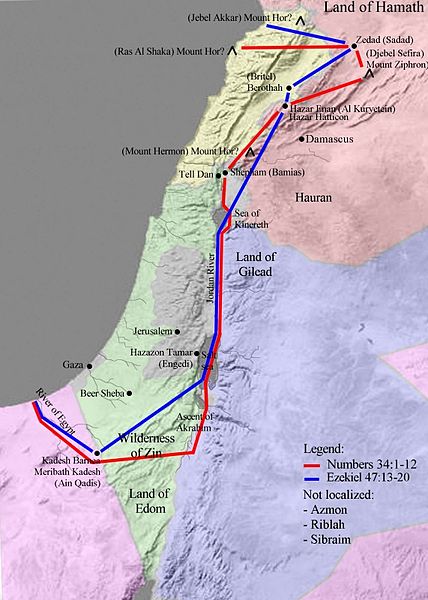
6 Comments on “Preparation for Total War | Deuteronomy 20; Invasion of Canaan; Israel’s enemies; Israel’s ancient borders”
Pingback: The BATTLE of JERICHO – Gods War Plan – Best Bible Battles – War Strategy – Biblical Applications
Pingback: Preparation for the New Life - Gods War Plan | Best Bible Battles & War Strategy
Pingback: Headquarters in the Wilderness - Gods War Plan | Best Bible Battles & War Strategy
Pingback: Battle-of-ai-Ai-fortress-Joshua-7-Joshua-8-Achan’s-sin-stealing-the-plunder
Pingback: Joshua and the Gibeonites - Five Amorite Kings - Bible Battles
Pingback: Bible Battles - BATTLE of AI - Achan's sin - Stealing the plunder - Tithing